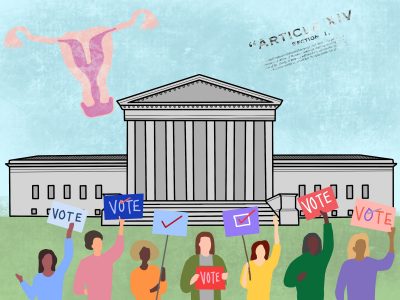The United States Supreme Court made a landmark decision in Dobbs v. Jackson Women’s Health Organization this summer, deciding that the Constitution does not uphold the right to an abortion.
The decision overruled 49 years of existing legal precedent of abortion as a federal right. Overnight, one in three women in the U.S. lost the right to abortion, with the fear of many more following suit.
Seventeen states, so far, have abortion bans on the books, with potentially more to follow, as anti-abortion advocates have made it clear that overturning Roe is only the beginning of a much larger effort to make abortion illegal nationwide.
Repealing Roe has often been opined by its supporters to be a measure that will ultimately simplify abortion law by returning the issue to the states, but recent events have proven the opposite to be true.
The post-Roe landscape has already been characterized by legal battles focused on jurisdiction and borders. Complexities over issues such as the criminalization of out-of-state abortions, as well as punishing those who assist in those abortions has brought forth questions regarding the enactment of these policies.
For example, Missouri has passed two bills punishing both those who travel out of state for an abortion as well as any who assist them in the process. Yet, at the same time, 12 governors of abortion-protective states have already issued executive orders against the extradition of those who may be punished under said laws.
These legal complexities could serve to undermine some of the more extreme anti-abortion measures legislators are trying to pass.
The truth is, despite the landmark ruling, the battle to redefine reproductive rights has only just begun.

The murky legal status regarding overlapping jurisdictions isn’t the only thing slowing anti-abortion legislation. Hardliners are also having difficulty pushing extreme abortion bans in some of the most conservative states in the country.
State legislators in South Carolina were forced to roll back a bill that would’ve banned abortion in nearly all situations, despite holding a Republican majority in both chambers. Similarly, an effort in Kansas to amend its state constitution to explicitly remove abortion as a protected right soundingly failed in a shocking turn of events for the traditionally conservative state.
Meanwhile, in Michigan, attempts to remove a petition to put abortion rights on the ballot have also failed, and now the state will undergo a referendum this November.
Despite their hardline rhetoric, when given the driver’s seat, anti-abortion legislators have been forced to slow down in the court room, the legislative halls, and the ballot.
However, what may ultimately prove to be the most interesting player in this growing legal and legislative puzzle, is the federal government itself.
Many, in the wake of Roe’s repeal, have been critical of Democratic leadership’s failure to codify abortion rights into law, and it has lead to the drafting a multiple proposals to correct it.
Most notable of which is the Women’s Health Protection Act, which, if passed, would provide legal protection for the right to access and provide abortion care.
However, the current makeup of congress does not allow for this kind of legislation to pass as the bill failed in the Senate last May. Perhaps a major swing in favor of Democrats may change what the federal government is capable of. However, a lot of other factors would need to go right for that to even be a possibility.
This type of scenario may just be wishful thinking, but the possibility of it points in the direction of a possible framework for the long term, federal protection of abortion rights.
However, for that to happen, voter participation is key.
The unintended consequence of returning abortion legislation to the states is that there’s no way for legislators to hide from the issue anymore. Many politicians have already made promises and staked their reputations on enshrining abortion rights.
Now, more than ever, it is important to put maximal pressure on lawmakers to do the right thing.
To those of us who lamented the repeal of Roe, and cursed the federal government’s inaction to codify Roe when it had the chance: now’s not the time to hang our heads in defeat. As the past few months have shown, there is still everything to fight for.




























































































































